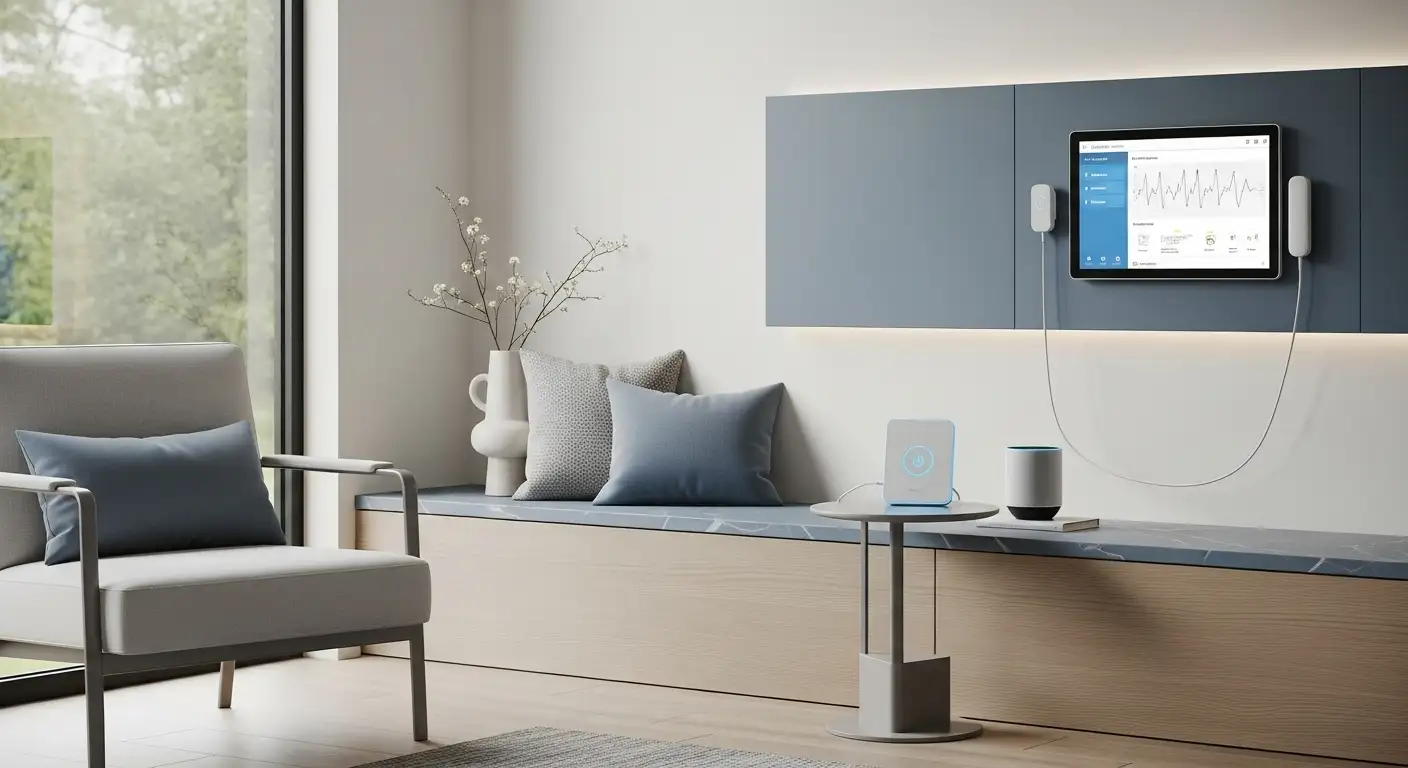Ensuring Financial Security
Financial security is a critical concern for seniors, as they may be more vulnerable to exploitation and fraud. Establishing strong safety measures can help protect their finances and provide peace of mind.

Working with Trusted Contacts
Collaborating with trusted contacts is an essential step in safeguarding finances. Seniors are encouraged to work with individuals they trust, including family members, friends, or professionals, particularly when managing financial matters. Having a trusted contact can help older adults make informed decisions and provide support in identifying potential scams or suspicious activities.
According to the Consumer Financial Protection Bureau, working with a trusted contact or bank can protect older adults from financial exploitation.
Vigilance from Financial Institutions
Financial institutions also play a crucial role in preventing financial exploitation. They are often the first line of defense in spotting unusual activities. Institutions typically utilize alerts and notifications to trusted contacts when they observe suspicious transactions or behaviors [1].
It is important to recognize that financial institution staff can act as important allies for seniors. Many banks and credit unions offer resources, guides, and training toolkits designed to help staff identify and prevent elder financial exploitation. Being aware of potential scams and working together with banks creates a stronger safety network for older adults.
According to research, older adults are frequently targeted as victims of financial crimes. In fact, only 45% of violent victimizations committed against seniors were reported to the police, highlighting the need for proactive measures [2]. Establishing a relationship with financial institutions and incorporating trusted contacts can significantly enhance financial security for seniors. For more information on technological support for seniors, visit our page on senior technology assistance.
Preventing Financial Exploitation
Financial exploitation poses significant risks to older adults. This section aims to provide insights into helpful resources for caregivers, the important role of financial institutions, and how to identify common scams targeting seniors.
Resources for Caregivers
Caregivers play a vital role in safeguarding older adults from financial exploitation. It is essential for them to educate themselves on the tools and resources available to protect their loved ones. This includes staying informed about the various types of financial scams and appropriate preventive measures.
Resources include educational materials on senior technology assistance, which can help older adults become more tech-savvy and aware of fraudulent activities online. Caregivers can also access community resources that focus on educating seniors about financial security and awareness.
Role of Financial Institutions
Financial institutions are crucial in combating elder financial exploitation. They have the capability to recognize suspicious activities on accounts and implement measures to protect older customers. Staff from these institutions can be trained to identify signs of financial exploitation and act promptly to address potential issues [1].
Role of Financial InstitutionsActionsIdentify Suspicious ActivitiesMonitoring transactions for unusual patternsUtilize AlertsSetting up alerts to notify trusted contacts of suspicious actionsProvide EducationOffering workshops on financial safety for older adults
By maintaining open lines of communication, financial institutions can ensure older adults are aware of the risks they face and the steps they can take to safeguard their finances.
Identifying Scams
Older adults must be educated to recognize the signs of financial scams. Being informed about common tactics used by scammers can significantly reduce the risk of exploitation. Some popular scams targeting seniors include fraudulent lottery wins, phishing emails, and fake investment opportunities.
Common ScamsDescriptionWarning SignsLottery ScamsScammers claim the victim has won a prize.Requests for payment to claim winningsPhishing ScamsEmails designed to steal personal information.Poor grammar, urgent language, unfamiliar senderFake InvestmentsPromises of high returns on investments.Pressure to act quickly, lack of verifiable information
By recognizing the signs of these scams, older adults can protect themselves from financial loss [3]. Specific information about Social Security scams is also available, providing guidance on how to avoid falling victim.
Overall, preventing financial exploitation requires vigilance from caregivers, financial institutions, and older adults themselves. By leveraging available resources, recognizing deception, and remaining informed, the risk of exploitation can be significantly reduced.
Home Safety Measures
Ensuring a safe home environment is crucial for elderly individuals and their caregivers. Key measures include fall prevention strategies, property crime awareness, and bathroom safety improvements.
Fall Prevention Strategies
Falls pose a significant risk for older adults, with a 2014 study by the Centers for Disease Control and Prevention indicating that 28.7% of adults over the age of 65 reported falling at least once in the last year. Furthermore, 60% of falls occur in the home according to research by the Hospital for Special Surgery [4].
To reduce fall risks, consider implementing the following strategies:
StrategyDescriptionHandrailsInstall sturdy handrails in hallways and stairwells.RampsUse ramps for easier access, especially if stairs are present.Adequate LightingEnsure rooms and hallways are well-lit, using bright bulbs and motion-activated lights.Bedroom AdjustmentsAdjust bed height, use firm mattresses, and ensure safe pathways to the bathroom.
Property Crime Awareness
Elderly individuals are often targeted for property crimes such as burglary or scams. Awareness and preparedness are key to mitigating these risks.
Recommended measures include:
For more tips on improving safety through technology, visit our article on senior technology assistance.
Bathroom Safety
Bathroom safety is especially important as falls occurring in this area are more than twice as likely to result in injury compared to falls in other rooms [4].
Key bathroom safety measures include:
MeasureDescriptionGrab BarsInstall grab bars near toilets and in showers or tubs to provide support.Non-Slip MatsUse non-slip mats to prevent slips on wet surfaces.Shower ChairsConsider shower chairs to provide stability while bathing.Raised Toilet SeatsUse raised toilet seats to facilitate easier sitting and standing.
By implementing these home safety measures, elderly individuals can significantly reduce the risk of falls, enhance property safety, and ensure a secure living environment.
Kitchen Safety Tips
The kitchen can be a hazardous area for elderly individuals due to various physical and cognitive challenges. Implementing effective safety measures can significantly reduce the risks.
Risks of Kitchen Fires
Adults 65 and older face a higher risk of injury and death from kitchen fires due to physical, visual, hearing, or mental impairments. The presence of cooking-related hazards, like unattended appliances or flammable materials, can exacerbate this risk. It is essential for kitchen safety devices to be equipped with alerts that utilize sound and strobe lights, particularly for those who may have hearing difficulties [4].
Fire Risk Statistics
Type of Kitchen Fire RiskPercentageUnattended Cooking33%Flammable Materials Near Heat Sources40%Electrical Failures15%Other Accidental Fires12%
Implementing preventive measures, such as keeping flammable items away from heat sources, installing smoke detectors, and using fire extinguishers, is essential for ensuring safety.
Adaptations for Older Adults
Elderly individuals may require specific adaptations in the kitchen to enhance safety and usability. These adaptations can make cooking activities more convenient and secure.
Key Adaptations
Communities that serve seniors often offer additional services, such as dining options and wellness clinics, to ensure expertise in meal preparation and health upkeep. (Senior Lifestyle)
By recognizing the risks associated with kitchen activities and making necessary adaptations, elderly individuals and their caregivers can significantly enhance kitchen safety and security.
Enhancing Exterior Safety
To ensure the safety and security of elderly individuals, enhancing exterior safety measures is essential. This involves installing handrails and ramps, as well as providing adequate lighting around the home.
Handrails and Ramps
Handrails and ramps play a critical role in preventing falls, one of the leading causes of injury among older adults. The installation of sturdy handrails along stairs, entrances, and ramps can provide vital support for individuals as they navigate these potentially hazardous areas. Ramps, when needed, enable easier access to the home for those with mobility challenges.
FeatureDescriptionHandrailsMust be securely fastened and easy to grip. Install on both sides of stairways for added support.RampsShould have a gentle slope to allow for easier navigation and be wide enough to accommodate walkers or wheelchairs.
Older adults are advised to wear nonslip footwear and assess their homes for any trip hazards, such as unsecured rugs [4]. Regular maintenance of pathways, ensuring they are clear and even, can significantly reduce the risk of falls.
Adequate Lighting
Proper lighting is another crucial factor in enhancing safety for seniors. Installing bright solar lights or motion detection lights around steps, walkways, and entrances helps illuminate these areas, especially during the night. Adequate lighting improves visibility and reduces the likelihood of accidents caused by low visibility.
Lighting TypeBenefitsSolar LightsCost-effective, easy to install, and environmentally friendly.Motion Detection LightsAutomatically illuminate when someone approaches, providing extra security and visibility.
Seniors are encouraged to perform regular checks of outdoor lighting fixtures, replacing bulbs when needed to maintain clear visibility. Improving exterior safety measures not only supports physical well-being but also enhances the overall confidence of elderly individuals and their caregivers.
For more information on how to support senior safety, visit our section on senior technology assistance.
Evidence-Based Fall Prevention Programs
Reducing Fall Risks
Falls are the leading cause of both fatal and non-fatal injuries among older adults. Evidence-based fall prevention programs are designed to minimize these risks through various interventions tailored specifically for this demographic [5]. These programs incorporate strategies known to enhance balance, strength, and overall safety.
Through assessments and structured activities, seniors can gain valuable tools to manage their environment and improve their physical capabilities, thus reducing the likelihood of falling. Some key components include:
ComponentDescriptionStrength TrainingImproves muscle strength necessary for stability and mobility.Balance ExercisesTarget balance to help prevent falls.Home AssessmentsIdentify and rectify fall hazards in living spaces.
By utilizing these strategies, older adults can enhance their independence and maintain a higher quality of life.
Structured Group Activities
Structured group activities play a significant role in promoting safety among older adults. Programs like "A Matter of Balance" focus on equipping participants with techniques to handle their fear of falling while improving strength and balance. This eight-week intervention emphasizes setting realistic goals and modifying environments to reduce potential fall risks.
Another notable program is "CAPABLE (Community Aging in Place – Advancing Better Living for Elders)," which involves a multidisciplinary approach to fall prevention. Over five months, community-dwelling seniors receive tailored services from healthcare professionals and handymen, enhancing mobility and safety in their daily activities.
The "Enhance Fitness" program offers three weekly sessions focusing on cardiovascular health, balance, strength training, and flexibility. This initiative provides both physical and social benefits, as participants engage in exercises that also foster a community spirit among older adults [5].
To further assist seniors in navigating safety challenges, exploring senior technology assistance can also provide additional support and tools that promote safety measures at home and enhance independence.
References
[2]:
[3]:
[4]:
[5]:



